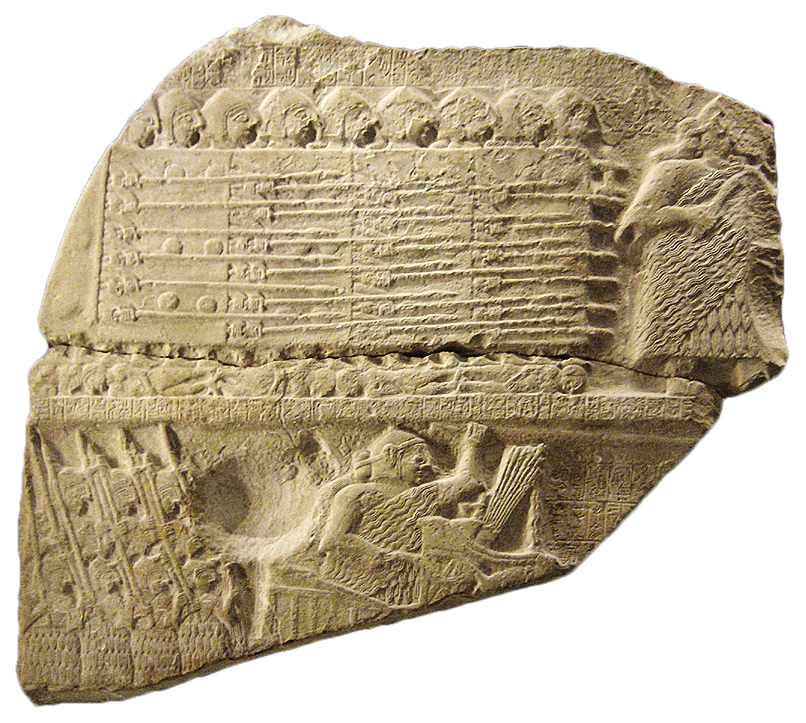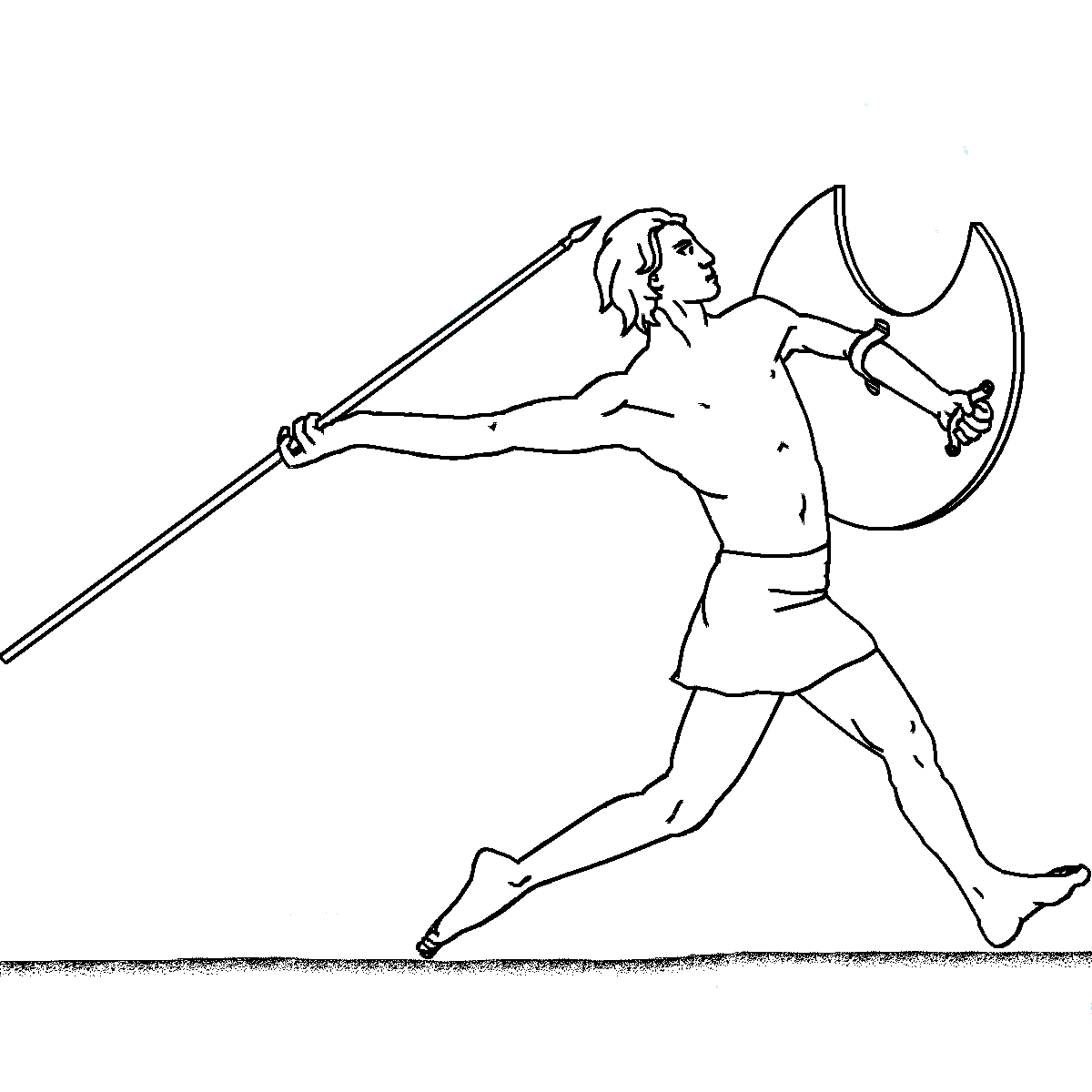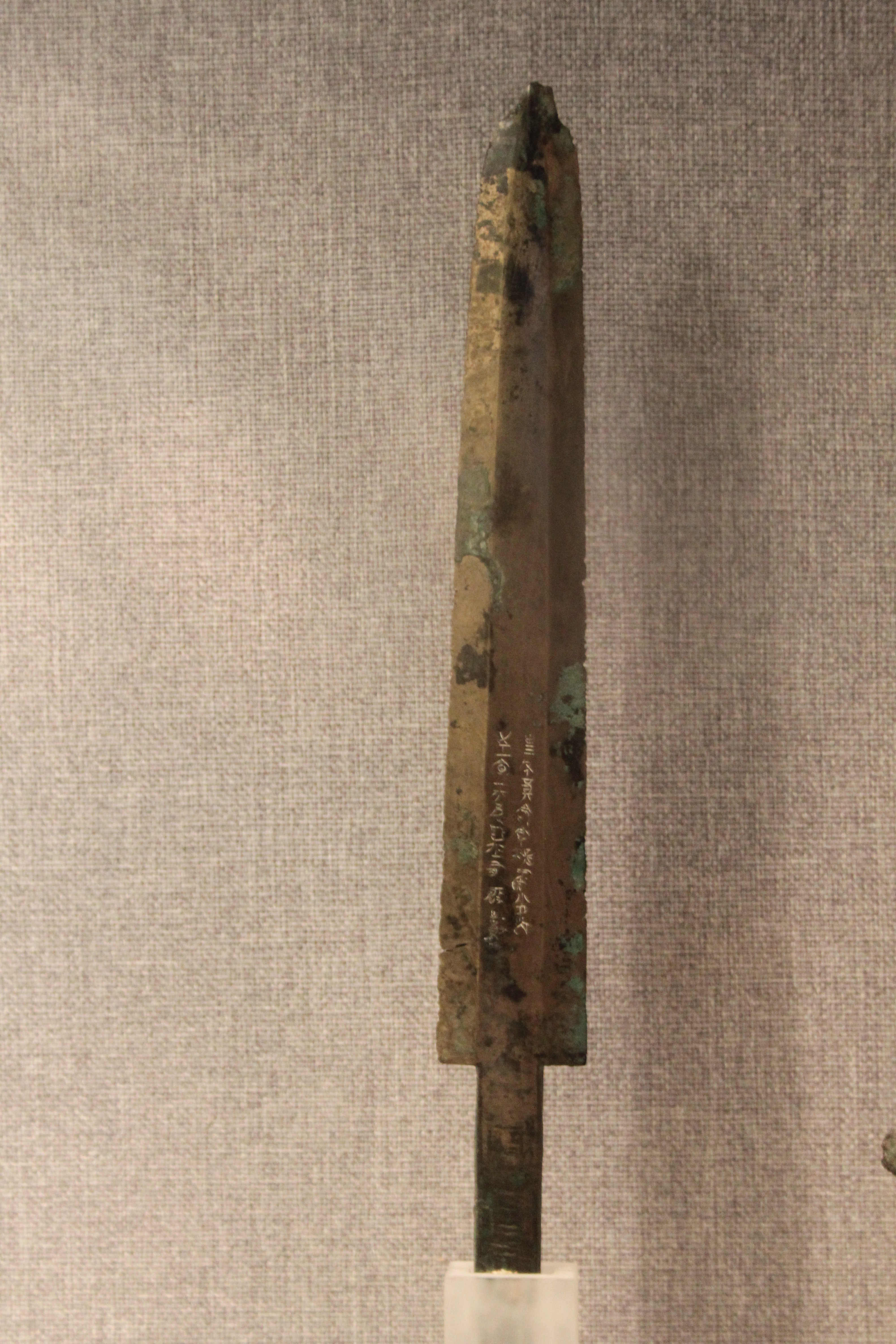|
Spears
A spear is a polearm consisting of a shaft, usually of wood, with a pointed head. The head may be simply the sharpened end of the shaft itself, as is the case with fire hardened spears, or it may be made of a more durable material fastened to the shaft, such as bone, flint, obsidian, copper, bronze, iron, or steel. The most common design for hunting and/or warfare, since modern times has incorporated a metal spearhead shaped like a triangle, diamond, or leaf. The heads of fishing spears usually feature multiple sharp points, with or without barbs. Spears can be divided into two broad categories: those designed for thrusting as a melee weapon (including weapons such as lances and pikes) and those designed for throwing as a ranged weapon (usually referred to as javelins). The spear has been used throughout human history as a weapon for hunting and/or fishing and for warfare. Along with the club, knife, and axe, it is one of the earliest and most widespread tools ever developed ... [...More Info...] [...Related Items...] OR: [Wikipedia] [Google] [Baidu] |
Polearm
A polearm or pole weapon is a close combat weapon in which the main fighting part of the weapon is fitted to the end of a long shaft, typically of wood, extending the user's effective range and striking power. Polearms are predominantly melee weapons, with a subclass of spear-like designs fit for thrusting and/or throwing. Because many polearms were adapted from Garden tool, agricultural implements or other fairly abundant tools, and contained relatively little metal, they were cheap to make and readily available. When belligerents in warfare had a poorer class who could not pay for dedicated military weapons, they would often appropriate tools as cheap weapons. The cost of training was comparatively low, since these conscripted farmers had spent most of their lives using these "weapons" in the fields. This made polearms the favoured weapon of peasant levies and peasant rebellions the world over. Polearms can be divided into three broad categories: those designed for extended rea ... [...More Info...] [...Related Items...] OR: [Wikipedia] [Google] [Baidu] |
Clacton Spear
The Clacton Spear, or Clacton Spear Point, is the tip of a wooden spear discovered in Clacton-on-Sea in 1911. At approximately 400,000 years old, it is the oldest known worked wooden implement.Allington-Jones, L., (2015) ''Archaeological Journal'', 172 (2) 273–296 The Clacton Spear – The Last One Hundred Years Description The spear is made of yew shaped into a point, and when found was long, diameter and straight, but drying out during the first decades of storage shrank it to , and warped it slightly into a curve. Treatment by wax impregnation in 1952 apparently stabilized it. At some time before this, the last of the tip had broken off and had been re-attached by conservators. This again came off in 2013 and was re-attached. It is on display at the Natural History Museum, London where its age is stated as 420,000 years. Tests to reproduce it suggested that it had been formed by scraping with a curved flint tool of the type found on the same site, known as the Clactonia ... [...More Info...] [...Related Items...] OR: [Wikipedia] [Google] [Baidu] |
Javelin
A javelin is a light spear designed primarily to be thrown, historically as a ranged weapon. Today, the javelin is predominantly used for sporting purposes such as the javelin throw. The javelin is nearly always thrown by hand, unlike the sling (weapon), sling, bow and arrow, bow, and crossbow, which launch projectiles with the aid of a hand-held mechanism. However, devices do exist to assist the javelin thrower in achieving greater distances, such as spear-throwers or the amentum. A warrior or soldier armed primarily with one or more javelins is a javelineer. The word javelin comes from Middle English and it derives from Old French ''javelin'', a diminutive of ''javelot'', which meant spear. The word ''javelot'' probably originated from one of the Celtic languages. Prehistory There is archaeological evidence that javelins and throwing sticks were already in use by the last phase of the Lower Paleolithic. Seven spear-like objects were found in a coal mine in the city of Schön ... [...More Info...] [...Related Items...] OR: [Wikipedia] [Google] [Baidu] |
Lances
The English term lance is derived, via Middle English ''wikt:launce#Noun 3, launce'' and Old French ''wikt:lance#Old French, lance'', from the Latin ''wikt:lancea#Noun, lancea'', a generic term meaning a spear or javelin employed by both infantry and cavalry, with English initially keeping these generic meanings. It developed later into a term for spear-like weapons specially designed and modified to be part of a "weapon system" for use couched under the arm during a Charge (warfare), charge, being equipped with special features such as grappers to engage with lance rests attached to breastplates, and vamplates, small circular plates designed to prevent the hand sliding up the shaft upon impact. These specific features were in use by the beginning of the late 14th century. Though best known as a military and sporting weapon carried by European knights and Man-at-arms, men-at-arms, the use of lances was widespread throughout Horses in East Asian warfare, East Asia, the Horses in ... [...More Info...] [...Related Items...] OR: [Wikipedia] [Google] [Baidu] |
Pike (weapon)
A pike is a long thrusting spear formerly used in European warfare from the Late Middle Ages and most of the early modern warfare, early modern period, and wielded by infantry, foot soldiers deployed in pike square formation, until it was largely replaced by bayonet-equipped muskets. The pike was particularly well known as the primary weapon of Spanish tercios, Swiss mercenary, German Landsknecht units and French sans-culottes. A similar weapon, the sarissa, had been used in classical antiquity, antiquity by Alexander the Great's Ancient Macedonians, Macedonian phalanx infantry. Design The pike was a long weapon, varying considerably in size, from long. Generally, a spear becomes a pike when it is too long to be wielded with one hand in combat. It was approximately in weight, with the 16th-century military writer John Smith (High Sheriff of Kent), Sir John Smythe recommending lighter rather than heavier pikes. It had a wooden shaft with an iron or steel spearhead affixed. Th ... [...More Info...] [...Related Items...] OR: [Wikipedia] [Google] [Baidu] |
Western Chimpanzee
The western chimpanzee or West African chimpanzee (''Pan troglodytes verus'') is a Critically Endangered subspecies of the common chimpanzee. It inhabits western Africa, specifically Côte d'Ivoire, Guinea, Liberia, Mali, Senegal, Ghana, Guinea-Bissau, but has been extirpated in three countries: Benin, Burkina Faso, and Togo. Etymology The taxonomical genus ''Pan'' is derived from the Greek mythology, Greek god of fields, groves, and wooded glens, Pan (mythology), Pan. The species name ''troglodytes'' is Greek for 'cave-dweller', and was coined by Johann Friedrich Blumenbach in his ''Handbuch der Naturgeschichte'' (''Handbook of Natural History'') published in 1779. ''Verus'' is Latin language, Latin for 'true', and was given to this subspecies in 1934 by Ernst Schwarz (zoologist), Ernst Schwarz, who originally named it as ''Pan satyrus verus''. Taxonomy and genetics The western chimpanzee (''P. t. verus'') is a subspecies of the common chimpanzee (''Pan troglodytes''), along wit ... [...More Info...] [...Related Items...] OR: [Wikipedia] [Google] [Baidu] |
Proto-Indo-European Language
Proto-Indo-European (PIE) is the reconstructed common ancestor of the Indo-European language family. No direct record of Proto-Indo-European exists; its proposed features have been derived by linguistic reconstruction from documented Indo-European languages. Far more work has gone into reconstructing PIE than any other proto-language, and it is the best understood of all proto-languages of its age. The majority of linguistic work during the 19th century was devoted to the reconstruction of PIE and its daughter languages, and many of the modern techniques of linguistic reconstruction (such as the comparative method) were developed as a result. PIE is hypothesized to have been spoken as a single language from approximately 4500 BCE to 2500 BCE during the Late Neolithic to Early Bronze Age, though estimates vary by more than a thousand years. According to the prevailing Kurgan hypothesis, the original homeland of the Proto-Indo-Europeans may have been in the Pon ... [...More Info...] [...Related Items...] OR: [Wikipedia] [Google] [Baidu] |
Kédougou
Kédougou ( Wolof: Keédugu) is a town in the Kédougou Region of south-eastern Senegal near the border with Mali and Guinea. It lies at an elevation of above sea level. Founded by the Malinké people, Kédougou means the "Land of Man". The town lies on the N7 road and the River Gambia amid the Pays Bassari hills and Fouta Djallon foothills. Local attractions include the Dindefelo Falls and Niokolo-Koba National Park. The main sources of income in the town are agriculture, small-scale commerce, construction, and gold mining. There is a military camp, a hospital, a community radio station and library, a Peace Corps Office and a number of small businesses. The most commonly spoken languages are Pulaar, Bassari, Bedik, Diakhanké, Malinké and French. In 2007, according to official estimates, Kédougou had a population of 18,860. Transport A proposed railway branching off the existing line at Tambacounda would serve this town. Mining The gold-mining industry has b ... [...More Info...] [...Related Items...] OR: [Wikipedia] [Google] [Baidu] |
Long Gun
A long gun is a category of firearms with long Gun barrel, barrels. In small arms, a ''long gun'' or longarm is generally designed to be held by both hands and braced against the shoulder, in contrast to a handgun, which can be fired being held with a single hand. In the context of cannons and weapon mount, mounted firearms, an artillery ''long gun'' would be contrasted with a field gun or howitzer. Small arms The actual length of the barrels of a long gun is subject to various laws in many jurisdictions, mainly concerning minimum length, sometimes as measured in a specific position or configuration. The National Firearms Act in the United States sets a minimum length of for rifle barrels and for shotgun barrels. Canada sets a minimum of for either. In addition, Canada sets a minimum fireable length for long guns with detachable or folding Stock (firearms), stocks . In the United States, the minimum length for long guns with detachable or folding stocks is with the stock in t ... [...More Info...] [...Related Items...] OR: [Wikipedia] [Google] [Baidu] |
Bayonet
A bayonet (from Old French , now spelt ) is a -4; we might wonder whether there's a point at which it's appropriate to talk of the beginnings of French, that is, when it wa ... , now spelt ) is a knife, dagger">knife">-4; we might wonder whether there's a point at which it's appropriate to talk of the beginnings of French, that is, when it wa ... , now spelt ) is a knife, dagger, sword, or Spike bayonet, spike-shaped melee weapon designed to be mounted on the end of the gun barrel, barrel of a rifle, carbine, musket or similar long gun, long firearm, allowing the gun to be used as an improvised spear in close combat.Brayley, Martin, ''Bayonets: An Illustrated History'', Iola, WI: Krause Publications, (2004), pp. 9–10, 83–85. The term is derived from the town of Bayonne in southwestern France, where bayonets were supposedly first used by Basques in the 17th century. From the early 17th to the early 20th century, it was an infantry melee weapon used for both offensive and ... [...More Info...] [...Related Items...] OR: [Wikipedia] [Google] [Baidu] |






